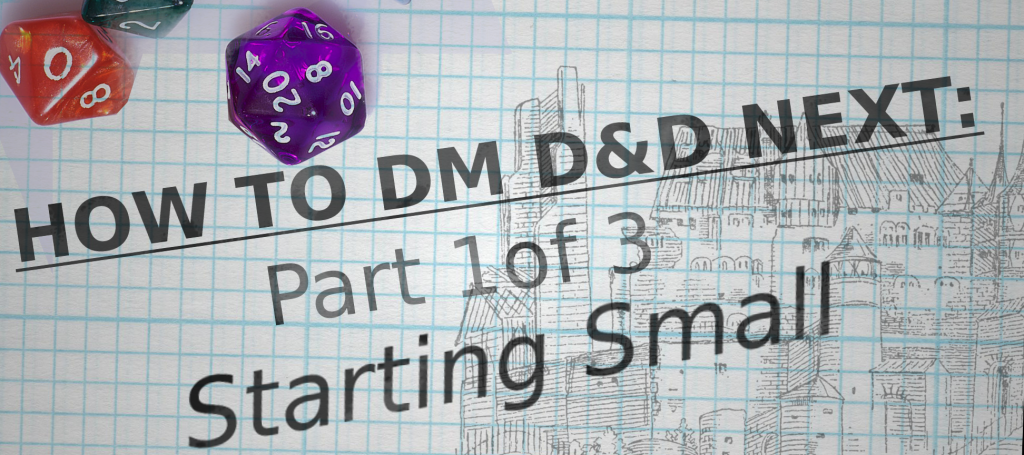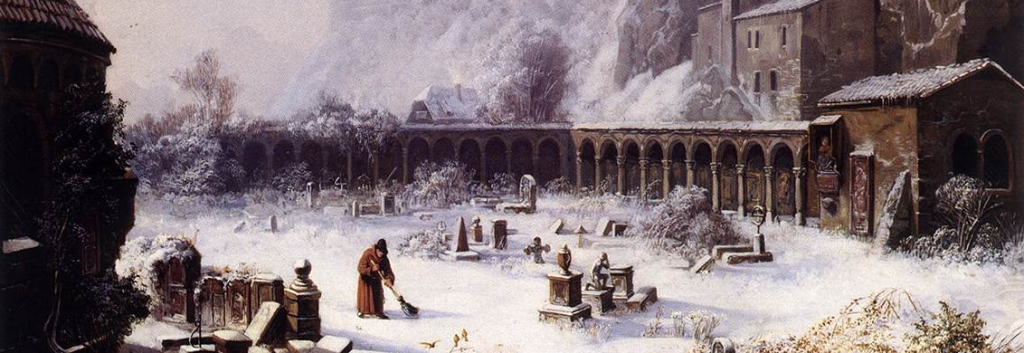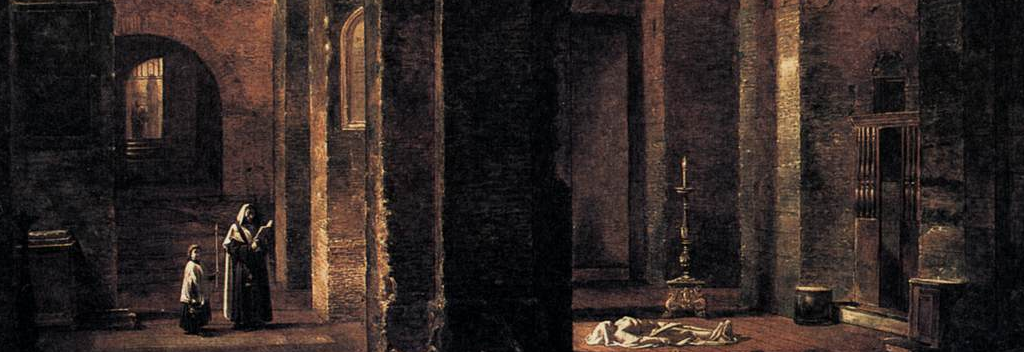THIS GUIDE HAS BEEN REWRITTEN AND REVISED HERE Feel free to read this CLASSIC article :-P
Do you want to run a Dungeons & Dragons or other pen & paper RPG, but aren’t sure where to start? Well, I’m here to get you on the right track! In this three-part series, I’ll show you valuable methods and shortcuts to help you build a foundation for a long-lasting game! For now, let’s focus on part one.
STARTING SMALL
If this is your first time running a game, you don’t need to reinvent the wheel. Your main objective should be to have fun and get a solid grasp on the rules of the system you want to play. To avoid too much stress, try focusing on a small scenario; perhaps a self-contained adventure that answers most of the questions you’ll be asking the players. The first of these questions is what is going on? Most likely, this is what the players will be getting wrapped up in. For your first game of Dungeons & Dragons make sure it’s something relatively manageable.
Examples:
A robbery of a family heirloom, the murder of an upstanding citizen, a merchant attacked just outside the city, or the disappearance of the town gravedigger.
Some of these ideas might not sound very exciting, but this is just the starting point. Let’s use the disappearance of the town gravedigger for this example. Now that we know what is going on, let’s move on to who is behind the event that just happened? Time to flesh out the event with more details. Let’s say the gravedigger stumbled onto a secret crypt hidden in the graveyard grounds. Now let’s think about who could be behind this. Maybe the crypt is the lair for a secret cult in the town, or a long-forgotten dungeon full of buried treasures. The crypt might even lead to a cave full of mysterious monsters. Let’s choose the first idea and see what we have so far.
The gravedigger disappeared after he stumbled upon a lair belonging to cultist worshipers, hidden in a crypt on the graveyard grounds.
The situation is starting to take shape, and sounds like a lot of fun! We’re ready for the next step: thinking about how the heroes will hear of the event. Let’s assume that the players are in a town. Towns and cities are the social hubs of Dungeons & Dragons, where rumors and news spread much faster than in the countryside or in the wild. You can use towns as a mechanic to give your players information about what’s happening in the world around them. The most iconic example of this mechanic is the tavern. Here, patrons and travelers gather to share their troubles and to recruit those willing to help. Taverns are the ideal place to start your players’ adventure. Now all you need is a name for the tavern and a few names for the patrons who frequent it, as well as a name for the town that it’s in.
Examples:
The Lively Demon Tavern, The Town of Raven’s Rest, and a few names: Kaldon, Dodrek, and D’estris.
We know we want our heroes to find out about the gravedigger’s disappearance at this bar, but we aren’t sure how we want the NPC to deliver this information to them. One way could be that Kaldon, the owner of the graveyard, is sitting at the bar when he notices the heroes walking in. He tries to enlist them for help by offering a few pints of ale and a modest reward for the gravedigger’s safe return. Or, perhaps Kaldon’s conversation with the barkeep could be easily overheard by the heroes. This would be trickier, as it’ll require the heroes to engage the NPC, and nervous first-time players may not want to approach, or even know that they should approach. In the interest of moving the story along at a decent pace, let’s have Kaldon initiate the conversation. Now, let’s go over what this looks like to a player:
You enter the Town of Raven’s Rest after having escorted a caravan here. After collecting your payment, you find yourselves weary. Night is falling, and only one building looks like it’s still open – a tavern in the center of town called The Lively Demon. Inside, you find a few patrons, most of whom are at the bar. As you sit at a table, you are greeted by a human who has brought you flagons of ale. “Well, well, what have we here?” he says with an uneasy smile on his face. “Adventurers, from the look of it! These drinks are on me, and there’s more where they came from, if you are looking for work!”
Assuming the heroes accept Kaldon’s offer, you must do two things: plant clues for the players so they can investigate what happened to the gravedigger, and decide what will happen once they find him.
So let’s look at which locations the players are aware of: basically just the grounds of the graveyard. Now, let’s list what’s on the graveyard grounds: the gravedigger’s quarters, maybe a temple, and of course the many gravestones. This gives us a few more options for new NPCs, such as a priest in the temple who heard noises last night, or maybe this priest is part of the cult and acts suspiciously when the heroes start asking questions. In the gravedigger’s quarters they could find a journal that recounts seeing strange lights or hearing what sounded like chanting coming from a specific area at the same time every night. Alternately -if for some reason you don’t want to introduce more characters- the players could wander the graveyard at night in search of disturbances on the graves. While doing this they could get ambushed by a few masked cultists. Any combination of these events would be sufficient to get the game going.
If you sense that the trail is going cold, give them an NPC who notices their interest and wants to help, or give them someone to follow like a shady noble who wants them to quit snooping around.
Let’s say the heroes speak to the priest in the temple, but you decide the priest reveals nothing and abruptly leaves, hopefully making the heroes suspicious. They find gravedigger’s quarters ransacked, and in a last-ditch effort for clues, they search the graveyard where they get attacked by several masked cultists. One cultist is revealed to be the priest they had questioned earlier. In his pockets they find the gravedigger’s journal, which discloses the location of the crypt. The players find the place described in the journal, where they see a mausoleum that shows obvious signs of disturbance. There are strange flickering lights clearly visible beneath the heavy stone door…
Now it’s the final scene, the climax of the adventure! Be sure to include something unexpected like a powerful spell, magic weapon, or unknown enemy. In this case, the crypt is set up to sacrifice the gravedigger who is bound on a ceremonial slab. Some cultists are performing a ritual when the heroes interrupt, and a battle ensues. I recommend that the cultists be wearing masks, so that if any of them escape there will be paranoia; anyone in town could be part of the cult, and might stalk the heroes later on. After the battle, they save the gravedigger, collect their rewards, and make a few connections around town (as well as a few enemies). Now you have a plot that you can use for your next adventure!
To summarize:
- We decided WHAT was going on.
- We fleshed out WHO might have been behind or involved with the event.
- We found out HOW the players would hear of this event.
After we established these basics, there were just a few details to add. The rest is just keeping up with your players! This simple process can save you a lot of time when trying to develop a quick and simple adventure.
If you have any questions about DMing, feel free to ask in the comments! Don’t forget to follow us here at Nerd Sourced and check out Part 2 where we will establish and refine your unique DM style.




